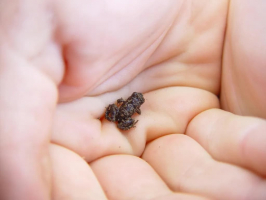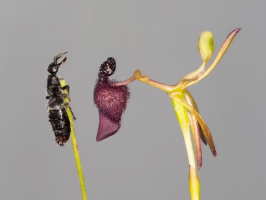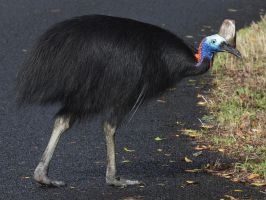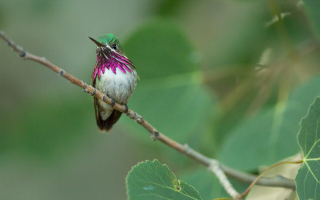Top 10 World's Smallest Flowers
Flowers are one of the simplest pleasures, representing beauty in its purest, most flawless form. Nothing can beat the variety of hues in a field of ... read more...wildflowers, the aroma of a fragrant arrangement, or a vase of flowers to bring some color to your living room. The flowers are not only diverse from color to scent, but they also come in different sizes, from small to the largest. Here is a list of the smallest flower in the world, let's find out!
-
Thymus vulgaris is a woody-based flowering plant of the Lamiaceae family, commonly known as Thyme, originates from Southern Europe and has a worldwide distribution. It prefers well-drained soil and sunny locations. Thyme can withstand both drought and frost. Thyme is also primarily grown today as an ornamental plant and a spice. The plant will bloom with tiny pink or purple flowers clustered in clusters at the ends of the branches in the early summer.
The pollinators, butterflies, and honeybees, are drawn to the flowers of thyme because they have both stamens and pistils, which are reproductive organs. It has small, scented, oval, evergreen leaves that are placed in opposing pairs on the stalk. Additionally, it has a hair-covered slender, grey to the green stem. Thymol, an antimicrobial compound, is present in the oil that is produced from the leaves and even the blossoms. It can reach a height of 15-30 centimeters.These tiniest flowers can be multiplied through seed, plant cuttings, and roots. Tiny seeds, or fruits of thyme, are widely distributed. In the Mediterranean, it easily spreads onto stony banks, dry walls, dry slopes, rough grassland, wasteland, and forests.
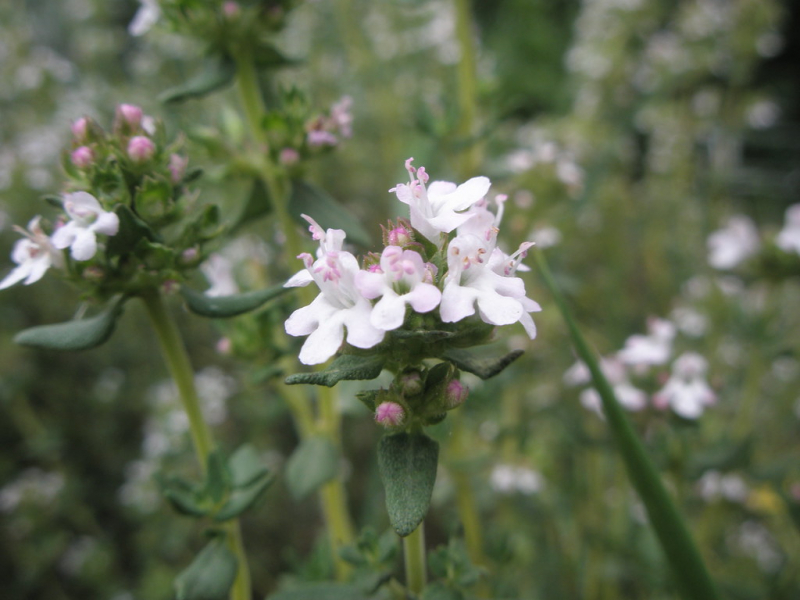
Via: Flickr 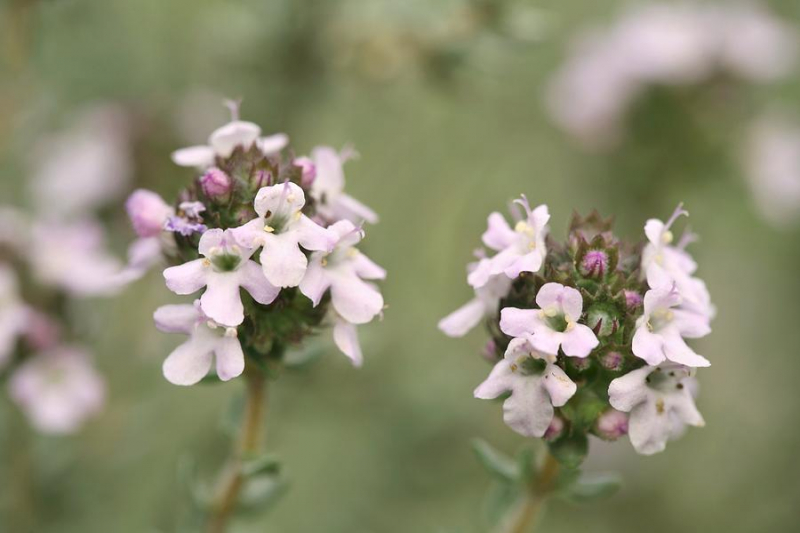
Via: iStock -
Lobelia is an herbaceous plant that belongs to the Campanulaceae family and originated in central and eastern Europe and western Asia. an erect, annual, or biennial plant that grows to a height of around 150 cm. The appearance of all species differs from one another. However, all species have simple, alternating leaves with two-lipped tubular blooms that have five lobes on each side.
Although blue lobelia is the most popular shade, the plant also comes in red, white, vivid purples, and delicate shades of pink or lavender. In full light and well-drained soil, lobelia grows well. The plant grows well in both chilly climes and those with warm, sunny summers. Numerous butterfly species are drawn to them by their tasty nectar and vibrant colors. Therefore, lobelia is a better choice for a rock garden or butterfly garden.A milk-like secretion can be found in the hairy stem. July through August are when flowers bloom. The fruit was shaped like a capsule and was completely encased in a persistent green calyx. This fruit was made up of countless little capsules that are easily dispersed by the wind. Lobelia was grown for decorative purposes.
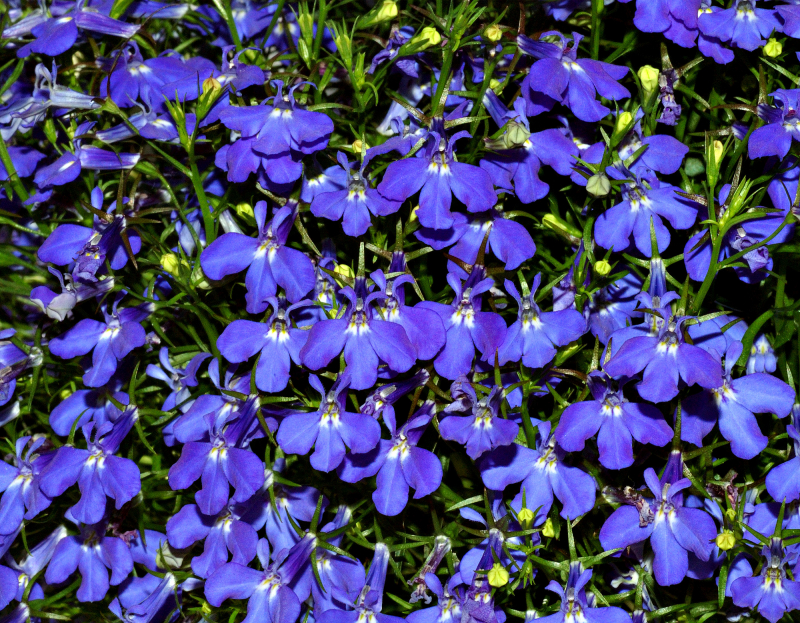
Via: Wikipedia 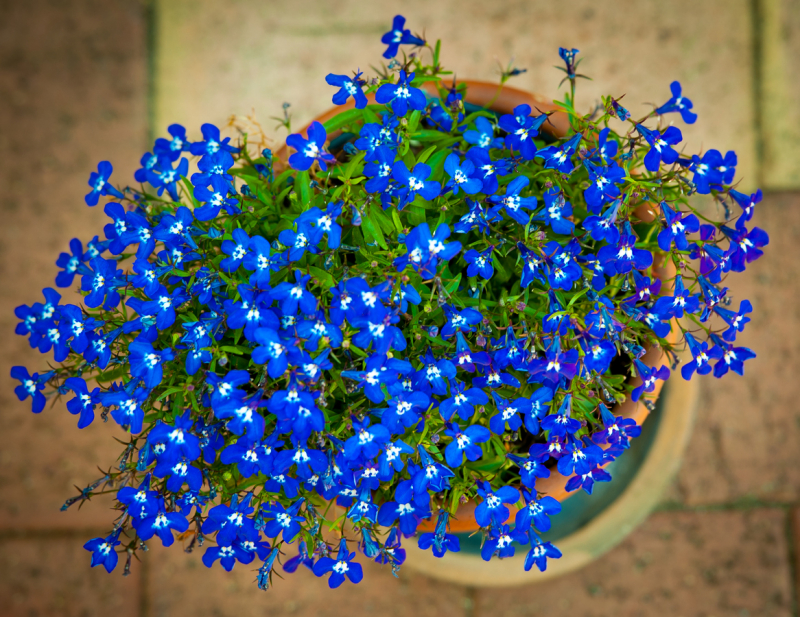
Via: Gardening Know How -
Kenilworth ivy is a flowering vine that belongs to the Plantaginaceae family, also called Cymbalaria muralis. They came from the Mediterranean region of Europe. It has a maximum height of five centimeters. The frost-tolerant plant will flourish in areas with cool summers, sandy or clay-type soils, and lots of rainfall. The evergreen, oblong, scalloped leaves have an inch to two-inch width and are alternately placed on narrow stalks. It has distinct spurred blooms with five petals, sepals, or tepals in bloom, like small snapdragons. In the months of May through September, tiny lilac blooms to blossom.
Kenilworth ivy spreads in an interesting way. It does, in fact, exhibit an odd phototropism. The little blooms initially incline themselves toward the light. After fertilization, it goes in the opposite direction as the light, driving the seeds deep into the cracks. The ability of this vine to self-fertilize from its node-rooting stems is also one of its most remarkable characteristics, and occasionally bees will also pollinate them. Additionally, they create a low-growing mat with tentacles that extend from the center.
It typically grows on rocks, in meadows, in gardens, along the side of the road, and in the cracks of old, wet walls. The glabrous, globular fruit of these plants looks like a capsule and protrudes from the calyx. It contains several black, wrinkly, oblong, and crested seeds. They are invasive plants that are also prolific. The smallest flowers are useful in a hanging basket or trailing over a bank and in a rock garden as a ground cover.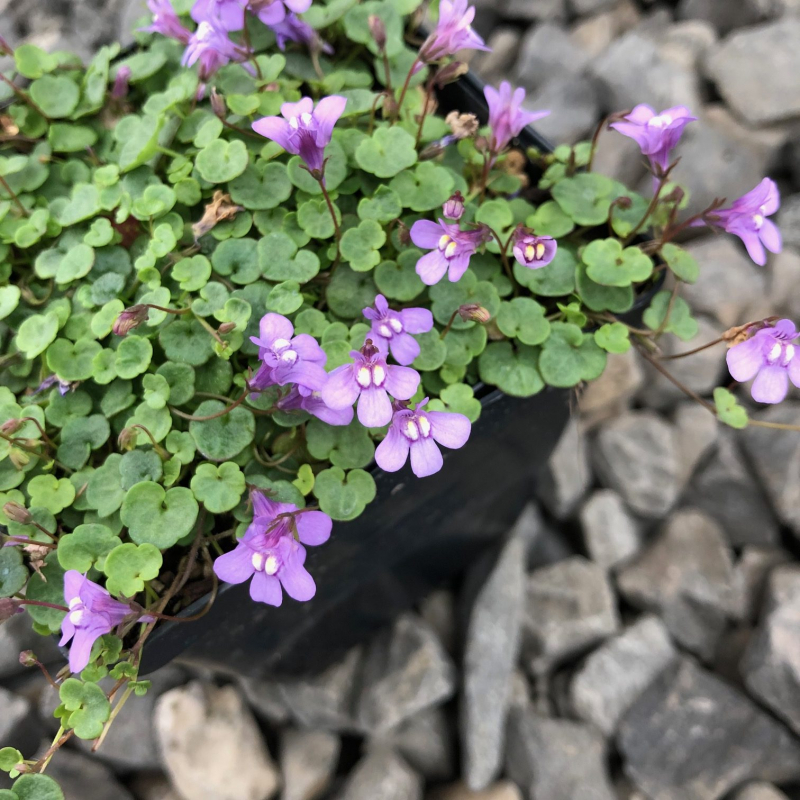
Via: Farmacie Isolde 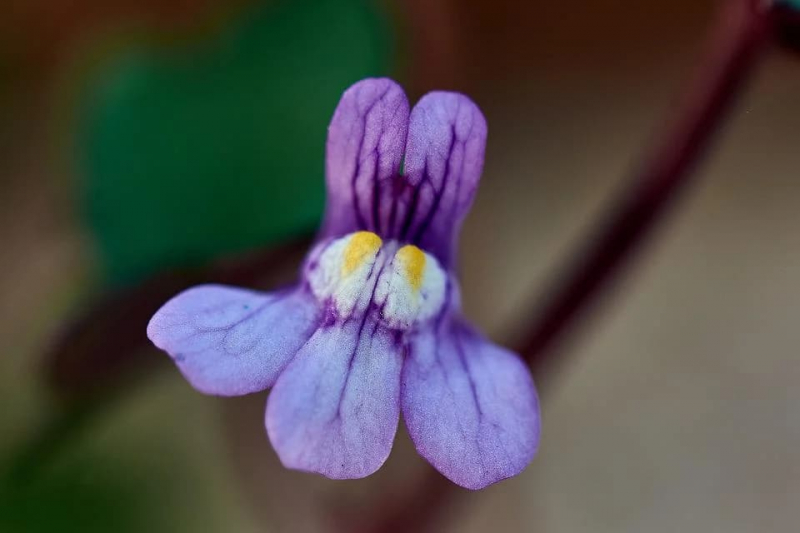
Via: Pixabay -
Forget-me-not is a genome of herbaceous plants belonging to the Boraginaceae family, originating from temperate parts of Eurasia and North America. Scientifically speaking, it is called a myosotis, and it can grow to a maximum width and height of 12 inches. It alludes to how leaves are shaped, which resemble mice's ears. These flowers come in 74 different species that are all distinct from one another.
The blunt-tipped, small, elliptical, hairy, grayish-green leaves of the forget-me-not are arranged in a rosette at the base of the stem. In addition, it has a little seed-filled fruit with a tulip shape. The majority of them have tiny, flat flowers with five gorgeous, thick, blue petals that are marked with white on the interior. On tightly coiling stems, these flowers are growing in spherical clusters.Some types of this well-known springtime flower have blooms that are one cm in diameter and have blue, pink, white, or yellow petals with a yellow center. The main pollinators for this plant are moths, bees, flies, and butterflies, who are drawn to the flowers. Forget-me-nots are multiplied by seed, cuttings, and rhizome division.
Even though the flower doesn't have much fragrance during the day, at night it releases a nice perfume. Depending on the species and climate, it either grows as an annual or perennial plant. The smallest flowers can also reproduce from seeds. The forget-me-not symbolizes sincere affection, fidelity, and memory. Since 1949, it has been Alaska's official flower. The entire plant contains astringent and ophthalmic effects that were once used to make treatments.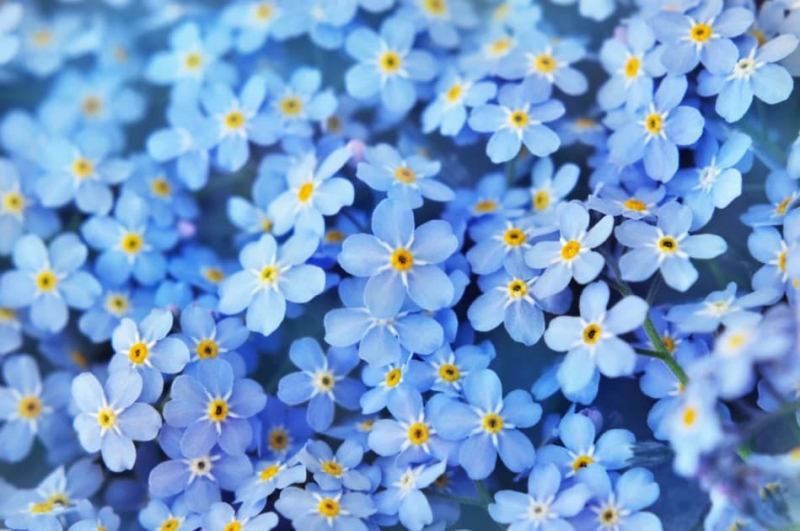
Via: Farmers' Almanac 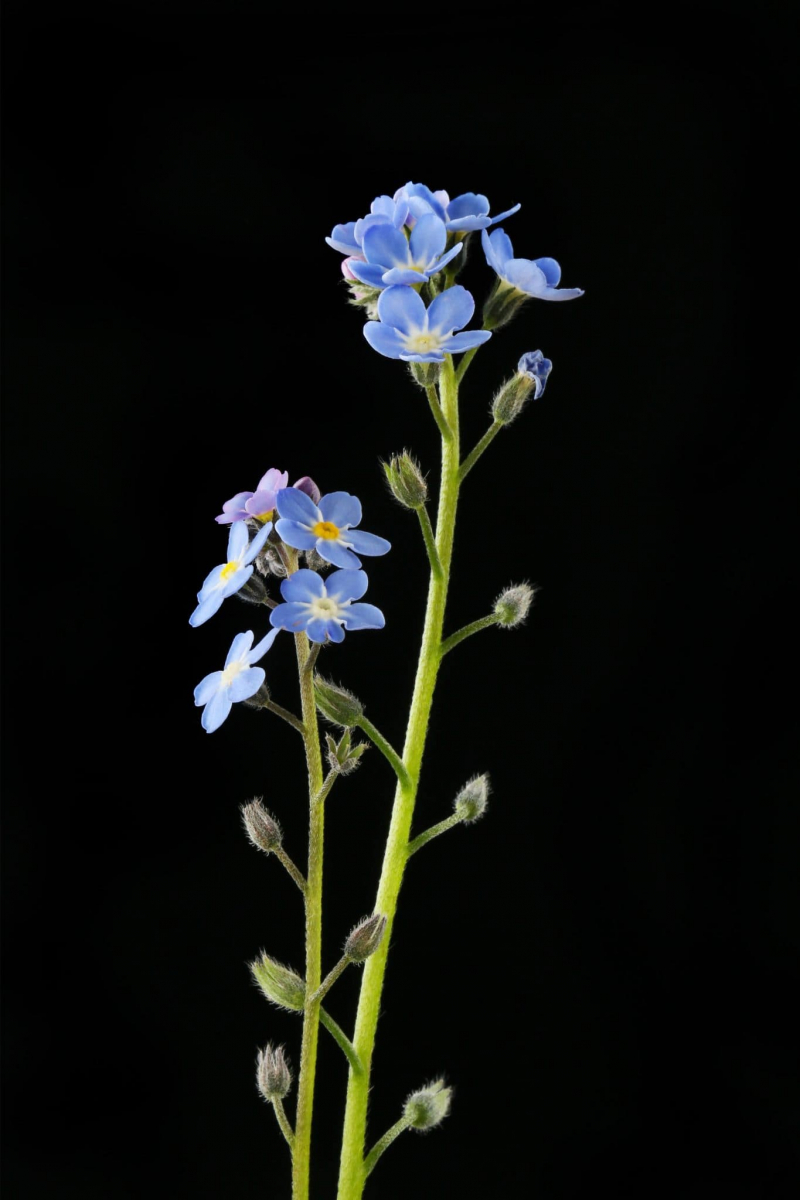
Via: Lovingly -
Baby’s breath is a group of annual and perennial herbaceous plants that belongs to the carnation family, the same as Caryophyllaceae. It contains numerous five-petaled little white or pink blooms, which are arranged in a profusion on branching tall stems, and slender, bluish-green, lance-shaped leaves. Baby's breath stems split into a variety of branches, giving floral arrangements, rock gardens, and bouquets an exquisite misty appearance.
Both the baby's breath plant's edible roots and its tiniest blossoms have been utilized as cut flowers and therapeutic ingredients. Gypsophila can grow as tall as fifty cm. Baby's breath is indigenous to regions including Australia, Eurasia, Africa, and the Pacific Islands. Their scientific name, Gypsophila, is derived from the Greek words "gypsies" and "Philos", which respectively indicate "gypsum" and "loving". They contain multiple brown or black seeds in the kidney or snail-shaped capsules with rounded or oval shapes that open at valves.
In the spring and summer, flowers bloom. Some regions have declared certain plant species to be invasive weeds. Baby's breath spreads from seeds. They can grow in fertile, light soils with full to partial sun, although proper drainage is crucial. Additionally, they enjoy moist environments and require watering during dry spells for quick growth.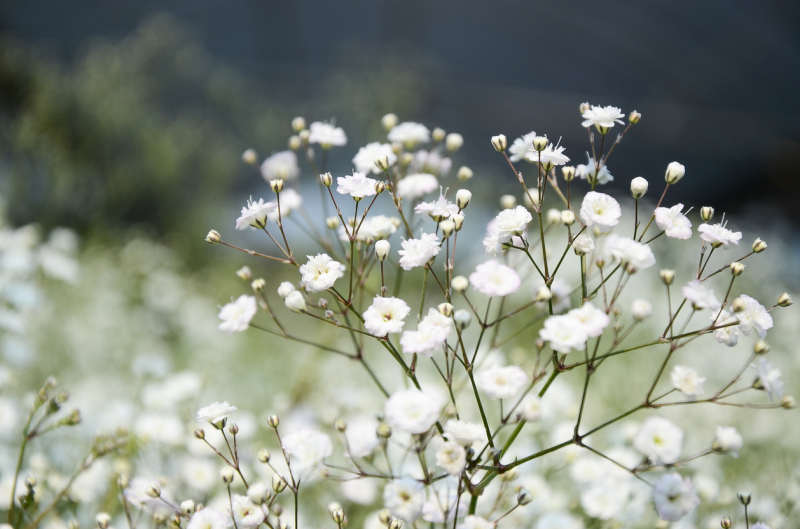
Via: Gardening Know How 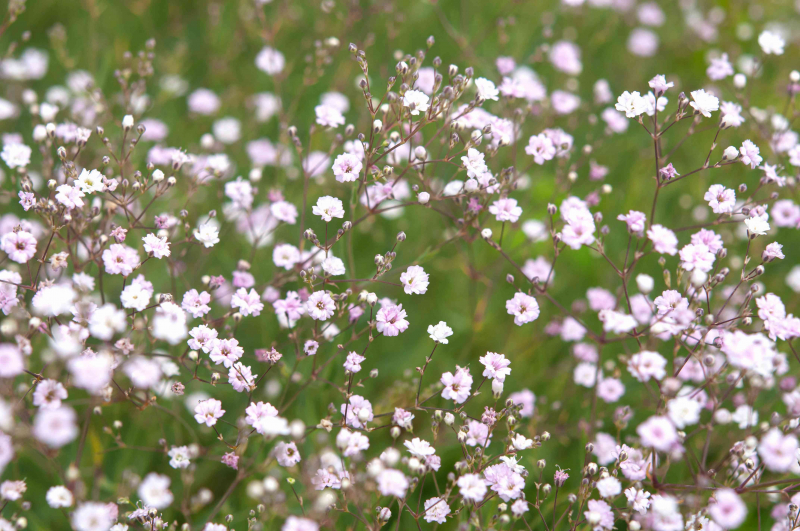
Via: The Spruce -
The black swallow-wort species is an herbaceous perennial in the Apocynaceae family, native to Europe. They grow to a length of one to two meters. The five petals of the star-shaped flowers, which range in color from deep purple to black, feature white hairs. Flowers have a width of about 25 inches, and they bloom in the months of June and July. On their twining green stems, the vines bear straightforward, opposing leaves. Brushy regions, woodlands, riverbanks, gardens, fence rows, wooded borders, old fields, pastures, and roadside are all easily invaded by black swallow-wort. It thrives in both intense sunlight and slight shade.
The fruit is a thin, milkweed-like pod that matures from green to light brown. When the pods open, flattened, spherical brown seeds with a silky filament at the tip fall out. It features a heavily budded rhizomatous crown and a fleshy root system. The numerous management techniques for black swallow-wort include chemical, manual, mechanical, and biological ones.
The diversity of species and animal habitats are threatened by the tiny blooms. The numbers of monarch butterflies may be affected if black swallow-wort replaces milkweed, where female monarchs lay their eggs and which they also use as nourishment for their larvae. Additionally, the habitat of this flower is reduced. Therefore, it is possible to stop the spread of this invasive plant by plucking and removing the pods before they open.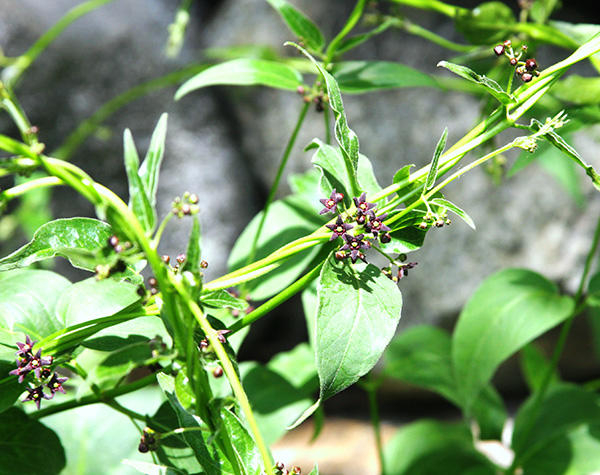
Via: Mass Audubon 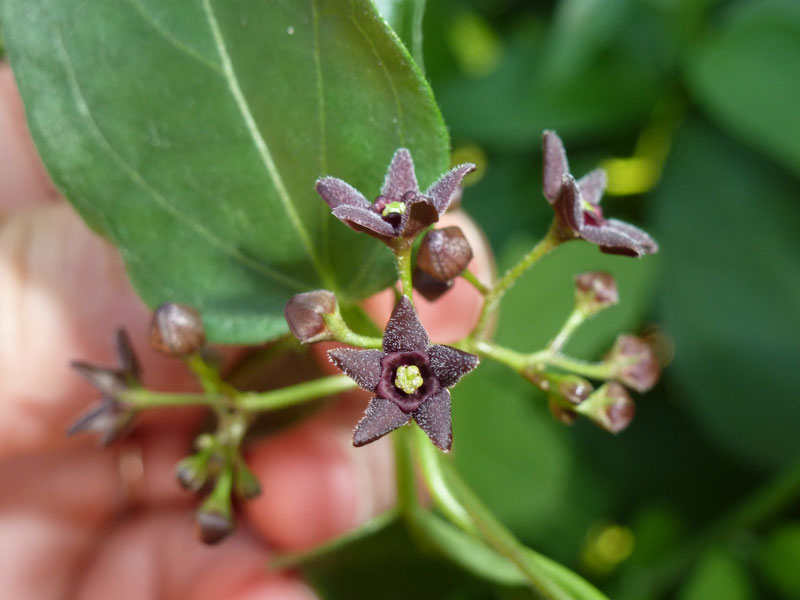
Via: Minnesota Department of Agriculture -
Black medick belongs to the member of the legume or clover family, which occurs in every continent. The trifoliate, low-growing annual, biennial, or short-lived plant has three pinnate leaves. The height of mature plants ranges from six to thirty-one inches. Up to fifty tiny flowers were gathered in the somewhat elongated cluster of bright yellow and tiny florets. The majority of stems have silky hair and are prostrate, slender, angled, and branching.
Single pods contain tiny, kidney-shaped fruits that develop to become black. Black medick roots are difficult to extract because of their fibrous strong taproot. Inflorescences bloom from April to September. It prefers direct sun. Black Medick is primarily found in compacted soil, along roadsides, in fields, on lawns, and in waste areas. The bacteria that fix nitrogen are likewise housed in nodules in the roots.They were employed as a plant for making fodder and for making honey. Reproduction begins with the seed. These tiniest flowers are named after a member of the Medicago genus. It thrives in well-drained, dry to damp soils.
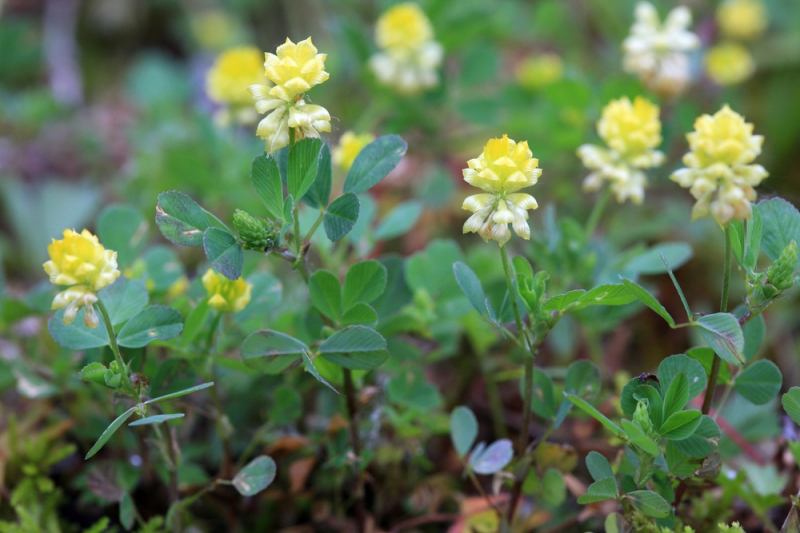
Via: Highland Titles 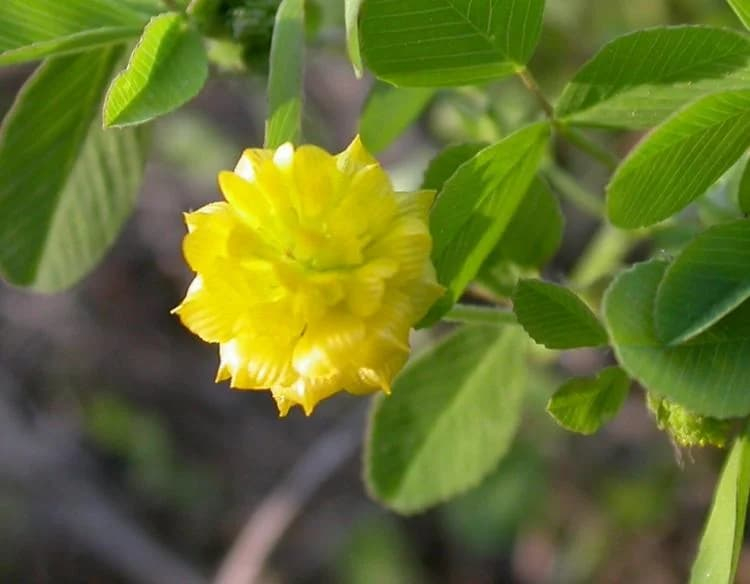
Via: MDC Teacher Portal -
Alfalfa is a flowering plant, also called Lucerne, which belongs to the legume family Fabaceae. It can reach a height of three feet. The plant has alternate leaves that are dispersed throughout the stalk. There are ten to thirty-five purple flowers in each cluster. They have strong, extensive roots. The nitrogen in alfalfa helps the soil and can prevent soil erosion.
Bees, which use alfalfa as a source of food and shelter, are the main pollinators of this plant because of the abundance of nectar it produces in its flowers. This plant is strong in protein, rich in minerals like phosphorus, zinc, folate, and manganese, as well as vitamins like A, E, D, and K.Depending on the sowing season, the bloom of alfalfa happens in the spring, summer, or fall. Sometimes, humans consumed sprouting seeds and thin stems. Two to eight seeds are found in the smooth or hairy fruit of alfalfa, which is composed of spirally coiled green to brown pods.
Alfalfa was primarily utilized by people as animal feed. They are frequently produced as a cover crop, hay, green manure, pasture, and silage. It can exhibit strong heat, cold, and drought tolerance. Alfalfa was once used to treat prostate, kidney, bladder, and urinary tract infections as well as arthritis. These tiniest blooms were also utilized to decrease cholesterol. This plant can live for up to 20 years.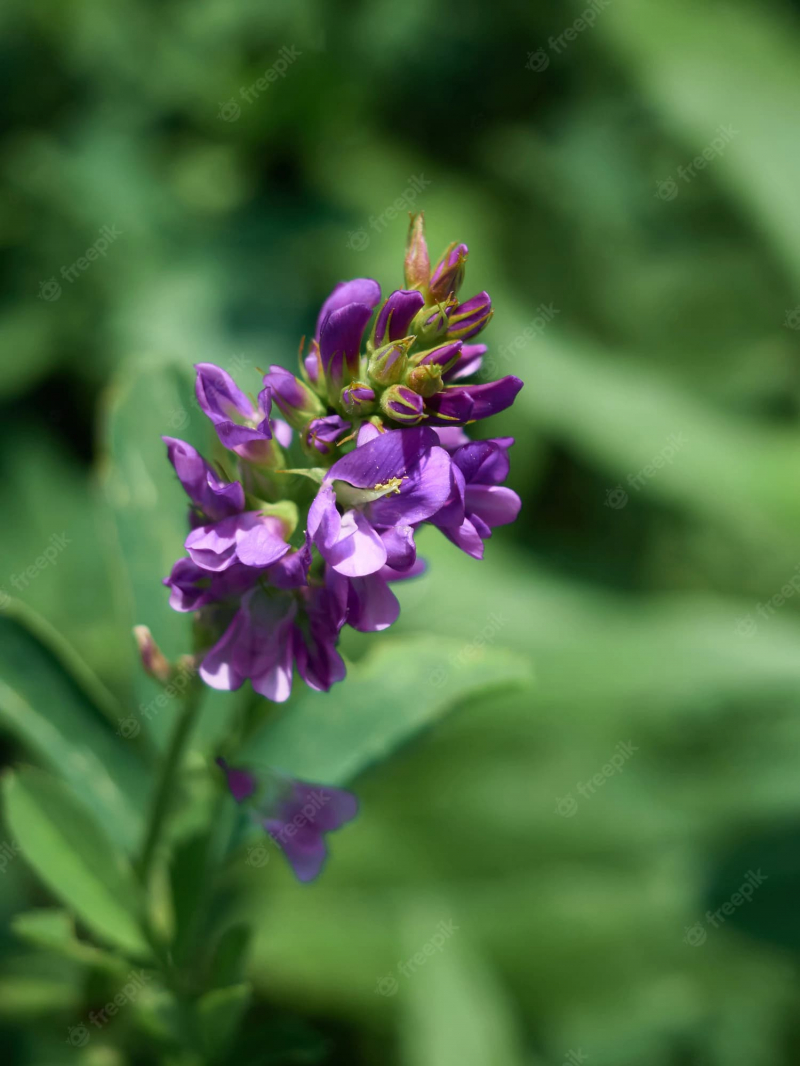
Via: Freepik 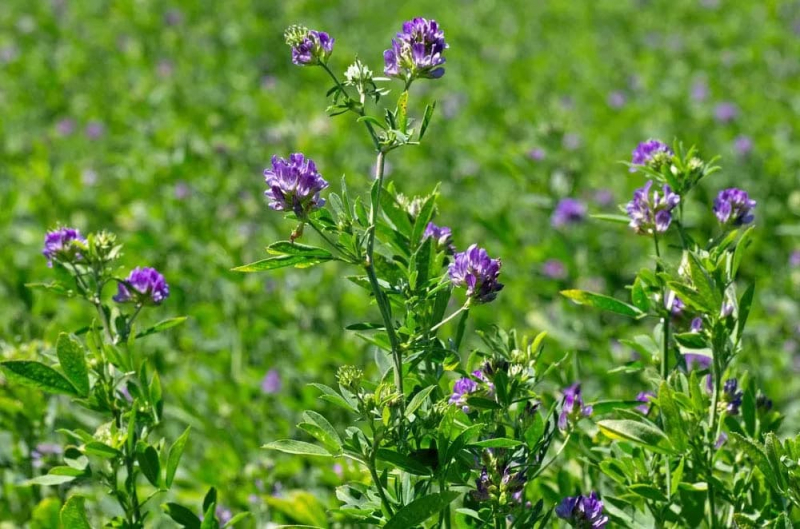
Via: Encyclopedia Britannica -
Bladderwort is a carnivorous aquatic plant that belongs to the Lentibulariaceae family. It may expand to a width of 2 mm to 10 cm. With the exception of Antarctica, all continents are home to these tiny blooms. They are most common in flooded environments, lakes, and streams. There are both terrestrial and aquatic bladderwort species. It has a lengthy, horizontally floating stem with simple or finely divided leaves most of the time. It also has no roots. The limb either floats freely on the water's surface or lies flat on the mud.
The plant's dark green, reddish, or brown leaves have bladders. the plant's small, opaque or dark-colored sacs are used to catch and digest tiny water creatures including worms, fly larvae, and insect larvae. They received their name from the bladder-like trap system they used to catch the little prey. The fruit of these tiniest blooms is a sphere-shaped capsule that contains many small seeds. From July to August, flowers bloom.
These tiniest flowers were primarily grown as ornaments for aquariums, pots, and terrariums. The bladderwort's two-lipped, bisexual blooms are placed in racemes at the top of the blooming stem. Two sepals, two stamens, five joined petals, and a superior ovary make up the flowers. In them, self-pollination also occurs. Additionally, seed and stem division are used in its propagation.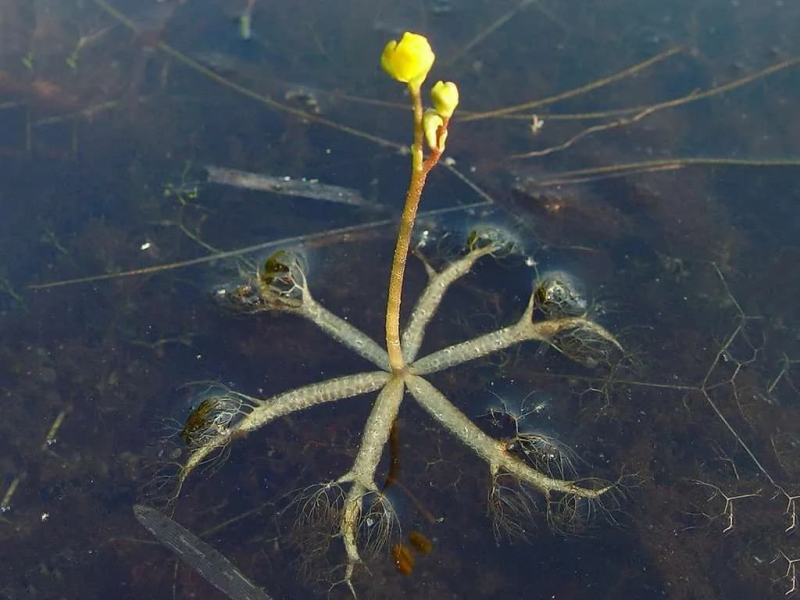
Via: Carnivorous Plant Resource 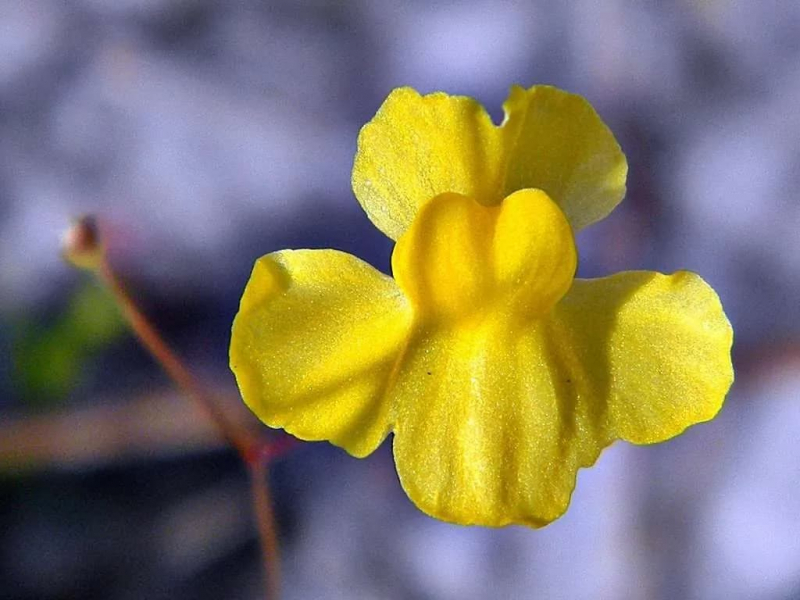
Via: Carnivorous Plant Resource -
Watermeal is the world’s smallest flowering plant, also called Wolffia globosa. It is a member of the Lemnaceae family of weeds. The length of the plant is about one millimeter. They also resemble a small, floating plant that is green or yellow-green in color. It lacks a root system. These little blooms each have one pistil and one stamen. These pond, stream, lake, and marsh surface-floating plants are found there.
They might render the ponds undesirable and useless. These plants, which get their nutrients directly from the water, are often found entangled in duckweed or mosquito fern colonies. Thus, a decrease in oxygen may cause stress or death in fish.They were utilized as a form of camouflage by amphibians, fish, reptiles, and other creatures. The name "utricle" refers to its tiniest fruit. For the creation of inexpensive medications, such as vaccines, genetic engineers change them. Because they contain about 44% protein, people have also exploited these small blooms to create bioplastics. They occasionally utilized them in cold-water aquariums because they are so simple to propagate.
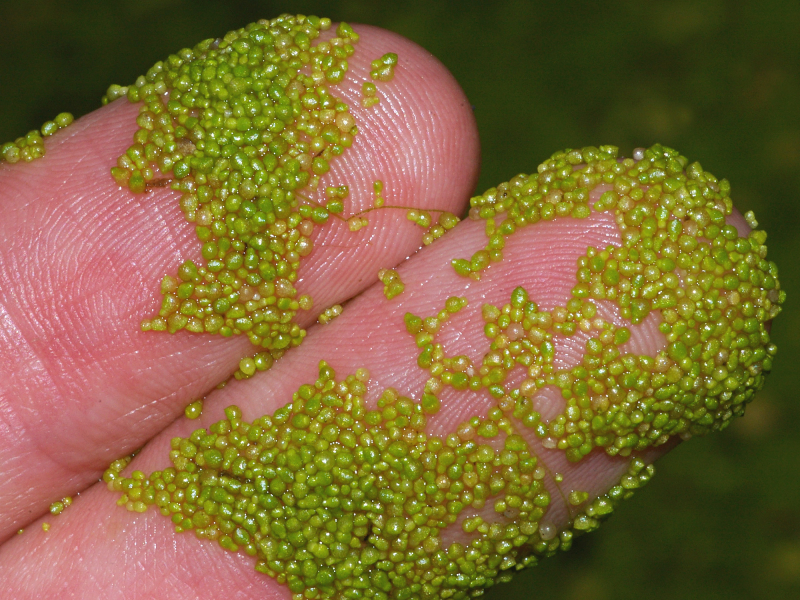
Via: Wikipedia 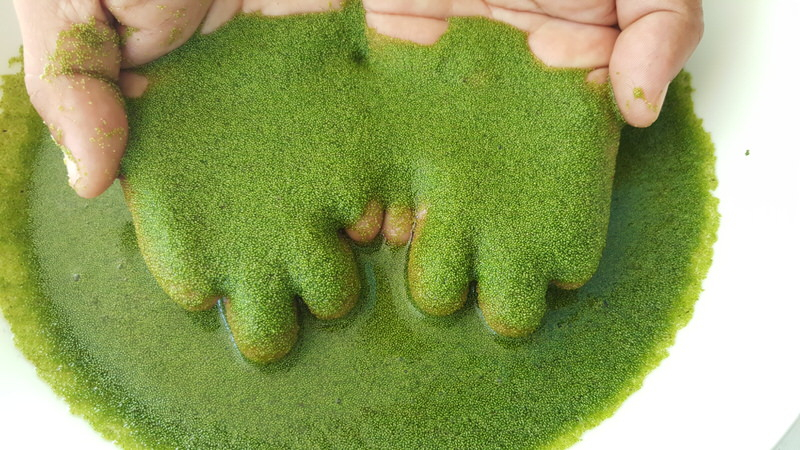
Via: iStock












